STREAMERS IN THE FALL
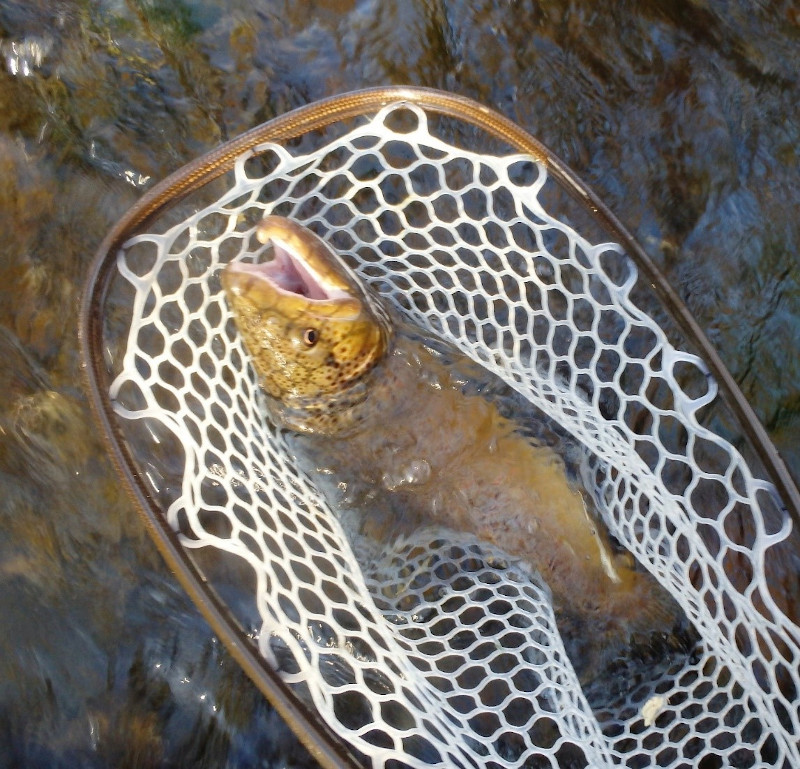
“It is unfortunate that so few fishermen keep a record of their sport with the attending circumstances, as much interesting and often valuable information is lost forever.” Theodore Gordon, from The Complete Fly Fisherman, the Notes and Letters of Theodore Gordon, Edited by John McDonald, 1947
The Yellowstone River is one of the legendary trout streams of the west and over the years it has produced some very nice Brown Trout during the fall. As by way of definition the time period in question, it runs from approximately mid-September to Late October. The best fishing times may vary slightly from year to year based on general over-all weather cycles. In 2018 the fall was more normal, or what we in Montana consider normal. The weather began to cool and the water temperatures began to drop, The Brown Trout leave their normal holding lies and begin to gather in the pool to begin their annual movement to their spawning grounds. In 2018 this cooler water temperatures appeared in mid-September. It is believed that the cooling of water and the shorter day length (photo cycle) triggers the fall spawning run of the Brown Trout on the Yellowstone River, the dates may slightly vary on other rivers in the west.
For years anglers traveled to Yellowstone to fish the pools in hopes of hooking that Brown Trout of a lifetime and many have been successful, the pattern of choice down through the years has been streamers. There have been many streamer patterns that have been effective and over a period of years many methods have been developed to present these imitations to the proper place in the water column to entice these Brown Trout of legend.
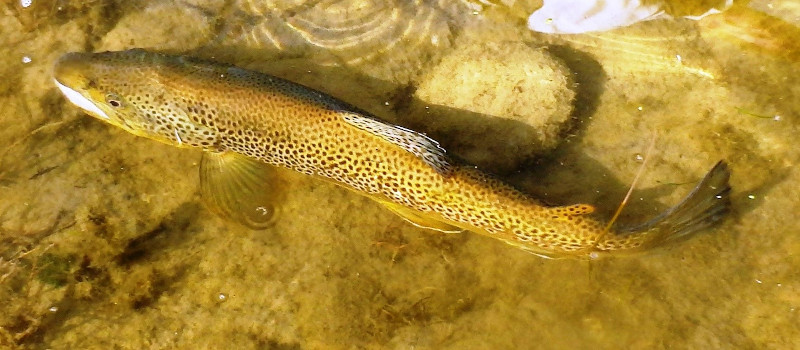
The late Joe Brooks fished these waters with floating fly lines and long leaders and a variety of streamers, however two of his favorites were Saltwater Blondes and the Muddler Minnow.
As time progressed and the fly rod improved. There were new sinking lines, shooting heads and sink tip lines that were developed and those improvements played a major role in the development of tactics to improve the ability of the anglers to place the imitations in the proper place in the water column to effectively entice the gathering brown trout.
Once the browns leave their normal area and begin to gather in the pools, they move to the graveled spawning areas from which they were hatched. Studies have shown that a brown Trout will travel up or down the river a distance of 50 miles.
Over the years the standard methods of fishing to these fall brown trout were to cover the pools from the very head of the pool to tail-outs of the pools using a variety of streamers patterns, and using a variety of sinking fly lines. These methods produce a great number of good brown trout down through the years.
Legendary anglers and fishing guides like the late Chester Marion, the late Don Williams along with John Bailey of Dan Bailey’s Fly Shop perfected the use of the sinking shooting heads to cover the pools of the Yellowstone and the results were extremely gratifying. However, another tactic which was developed was the use of sinking tip lines, and these are used to fish the runs and riffles between the pools. This method was developed and used knowing that the brown trout are moving during this time period, and they don’t get from pool to pool by taking the bus.
The brown trout that are moving are seldom found along the banks, unless there is deeper water in that area. Mostly the trout are taken in the deeper pocket found in the riffles and runs as the trout move up the river. Once again, there are several streamer imitations which bring results. Fishing these areas can be done by wading and or using a drift boat.
When these tactics were being developed back in the early 1970’s, ten weight rod systems were often used by the serious anglers. However, with the passage of time and the innovations in rod and fly line development, the current popular rod systems are eight or nine weight systems. By fishing the runs between the pools, the number of larger trout caught has increased.
During the greater part of the year, a brown trout will establish a territory in which it will live and feed. This territory will be aggressively defended against all comers. Thus, one of the reasons the browns take the streamers is their minnow like shape and the fact that the larger browns feed on larger form of food. Therefore, a brown will hit the streamer not only as a food form, but also in the aggressive protection of their territory.
The habits of the brown trout and the various reasons as to why streamers are taken remain throughout the year is predicatable, except during the spawning season. During the spawning season the brown trout will leave their territories and start to gather in deep pools to migrate to their spawning areas. This gathering will start as much as 60 days prior to the actual spawning. During this migration period, the browns will continue to feed. While they won’t expend much energy to chase a minnow, they seldom turn down and easy meal which is placed right in their face, so to speak.
This makes line control, fly speed, angle and depth of the presentation very important to the angler, along with a knowledge of the water temperature and its effect on the trout. The colder the water, the slower the retrieve should be. During the period of the actual pairing up and spawning the brown trout food intake drops to almost zero, however during this period they are very aggressive in protecting their mate and the redd (nest) where they are spawning. Often during this time period, it is the hook jawed males that are first to be caught, but sometimes a hen will be taken along with rainbow trout that have followed up the spawning browns to feed on the eggs the browns are depositing in the redd.
Over the years there has been much discussion on best type of day to fish. Are the cloudy days the best and bright clear day only decent if fished early in the morning or late in the evening? All this is possibly true, however some of the largest brown trout have been caught on bright sunny days, therefore judge for yourself and pick your own fishing times. One thing is certain, you can’t catch them unless your fly is in the water.
A word about imitations, and there are a great many pattern styles that are effective. I happen to prefer imitations the are constructed with feathers, marabou, rabbit strips or EP fibers.
Furthermore, remember that you are going be casting these imitations, often using some sort of sinking type fly line, so therefore don’t go overboard on the weight! If you do, you may have an encounter of the wrong kind with your own fly and it can be a painful experience.
The following are photos of pattern styles that I prefer, but use your own favorites, I am sure they will work.
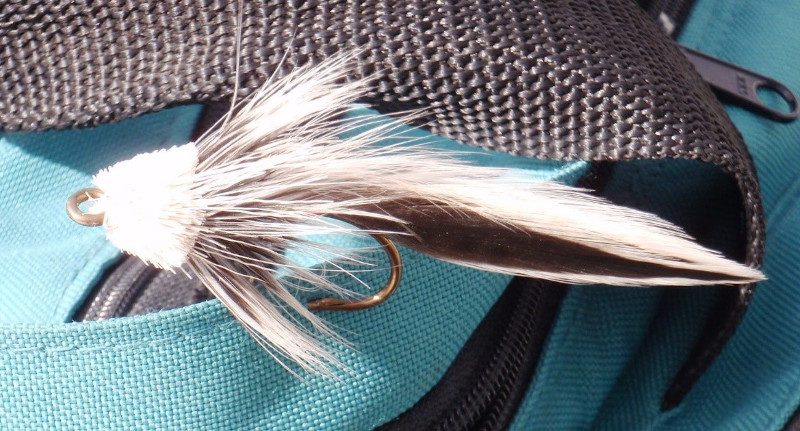
Muddled Lite Spruce Streamer
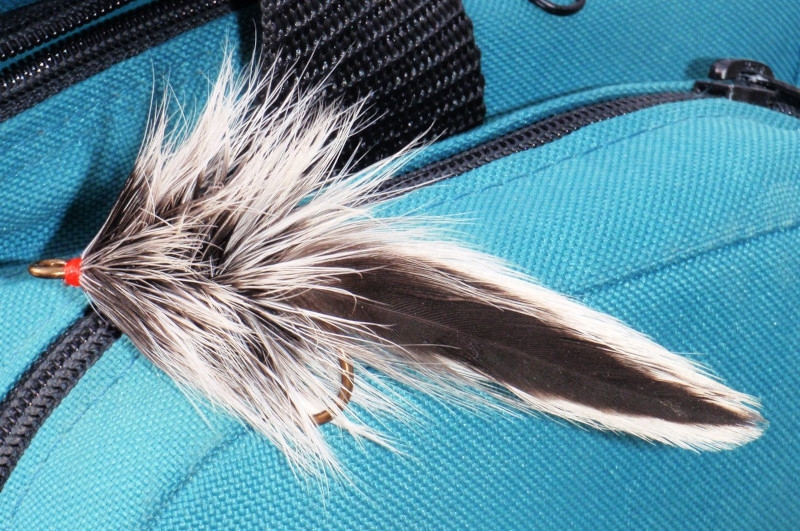
Western Lite Spruce Streamer, Marion Style
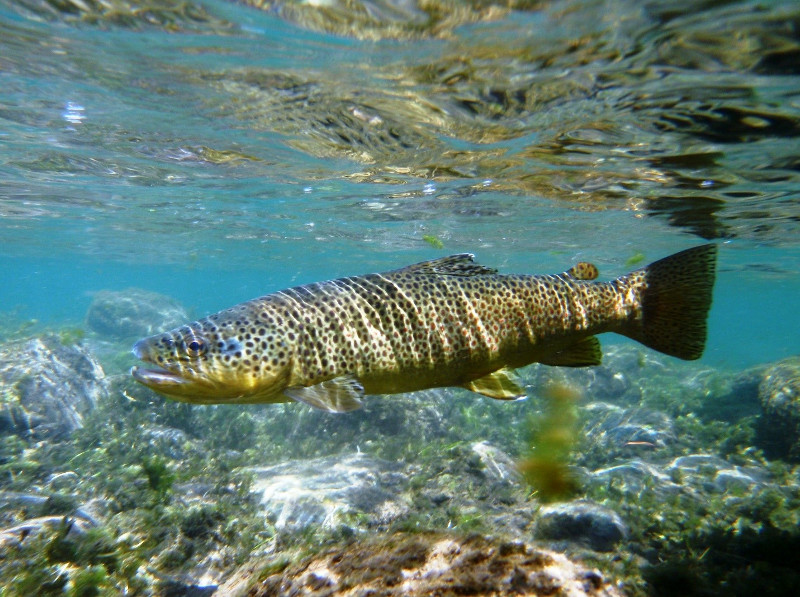
Regardless of your choice of imitation, this is the target!
Enjoy & Good Fishin’
Tom Travis Livingston, Montana
